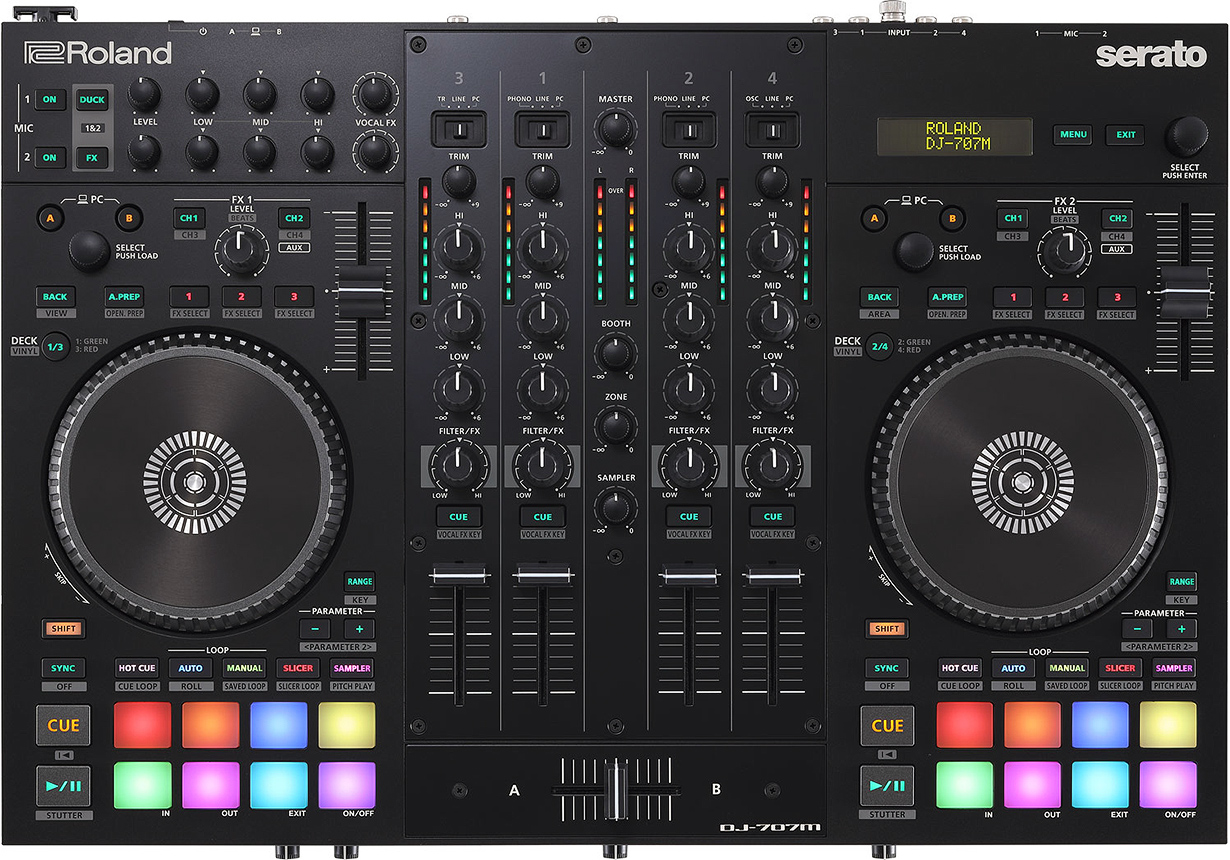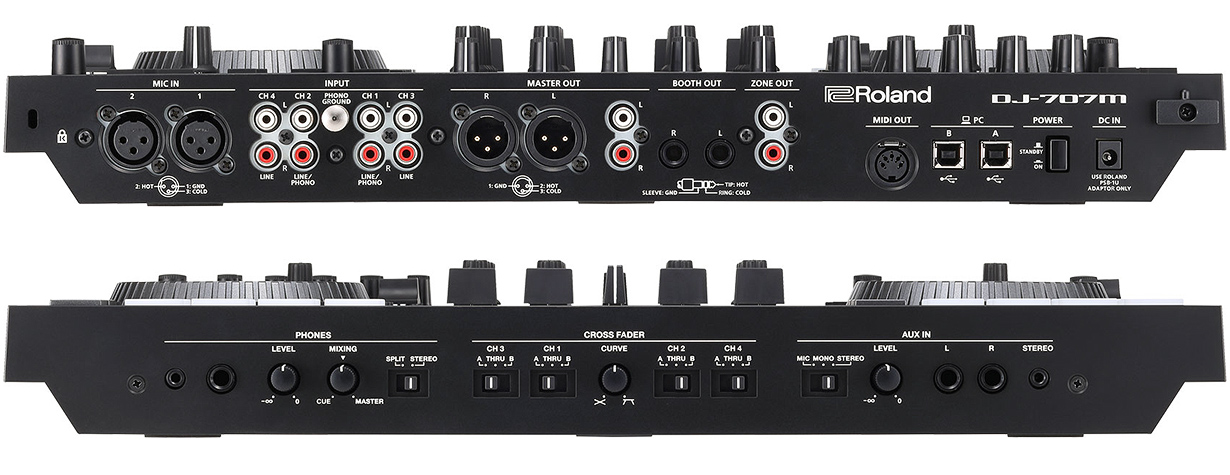Recently, Roland introduced us a new DJ-controller - DJ-707M. It is cheaper one and a half times the flagship model DJ-808, smaller in size, at first glance, it is the same sophisticated tool, which is his older brother. Let's try to understand their differences, what we got and what we lost, and does it make sense to save $500 on its purchase, or maybe you should even pay attention to the cheaper DJ-505.
Both instruments are four-channel and have a pair of Jog Platters and two groups of 8 RGB pads. Both of them work with Serato DJ software, which, according to many, is the best DJing software at the moment.
The most important difference between the DJ-808 and its middle brother is the presence of a built-in drum machine using the “TR-S” technology, which actually repeats the Roland TR-8 in terms of interface and sounds. In addition, the DJ-808 received a voice processing module derived from the vocal processor VT-3, thus turning into a one-of-a-kind software and hardware setup for DJing, which simply has no rivals. It combines a DJ controller and the ability to work with sound as a musician (drum machine, sound synthesis using Aira devices). The DJ-707M is just a hardware controller for Serato software. It has patterns for a drum machine, but it does not have physical controllers for manipulating new ones directly from the controller, like the DJ-808.
Both the DJ-808 and DJ-707M have built-in FXs that can be assigned separately for each output channel. They can also operate as standalone mixers for use with CDJs, turntables, mics, or other audio sources.
The older model, DJ-808, offers a choice of 3 sampling frequencies for the sampling engine - 44.1 kHz, 48 kHz, 96 kHz. DJ-707M has narrowed the choice to 48 kHz, which, in our opinion, is quite enough for club and open-space DJing.
Concerning interfaces and I/Os, both the DJ-808 and DJ-707M have 4 pairs of stereo line inputs, 2 XLR master outputs, a pair of coaxial master outputs and a pair of booth out. Here is the complete parity. But there is only one XLR microphone input for the DJ-808, and here the advantage is on the side of the new DJ-707M, which has two such inputs. On the other hand, the DJ-808 has a hardware microphone input sensitivity control on the rear panel, and the DJ-707M only adjusts it at the software level or through the built-in mixer. On the front panel, the DJ-707M has 2 line inputs with parameter settings controlable with switches, while the more expensive DJ-808 does not have such luxury, as well as an additional pair of Zone Out outputs. Headphone output from the front panel is similar for both controllers. We can observe an interesting situation with USB - the DJ-707M has two inputs for connecting to a computer (USB "B" format), one of which can be used as an audio interface, there are no USB "A" connectors, and the DJ-808 has one connection to a computer (USB B), but there are 2 connectors for connecting Aira devices - for example, synthesizers (USB Host / "A"). MIDI OUT is provided with each controller, using the standard DIN form factor. MIDI output allows to sync external MIDI devices to Serato DJ Pro software.
The DJ-808 is much larger in size. Visually - by a third, metrically - about 20 centimeters wider, 10 cm deeper and almost 2 times heavier - 6.8 kilograms versus 3.5.
So, if a fully-fledged drum machine (not only percussion patterns) is required in your workflow, and you do not want to use a separate instrument for this function, you have 2 options: more expensive - DJ-808 or cheaper one - DJ-505, which is two-channel DJ controller. If there is still enough space at your hand, the DJ-707M + Roland TR-8 / TR-8S will be a more convenient option, not much different in price overall from the DJ-808. You will get more setup variability and the ability to connect even more gear. If you do not need 4 channels, but you have interest in the built-in drum machine, take the DJ-505.



